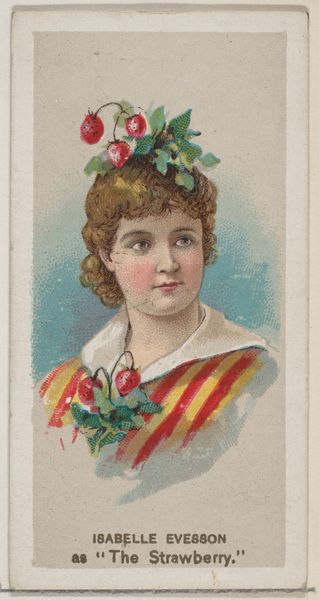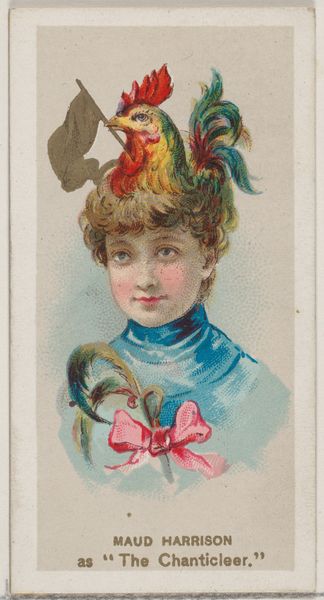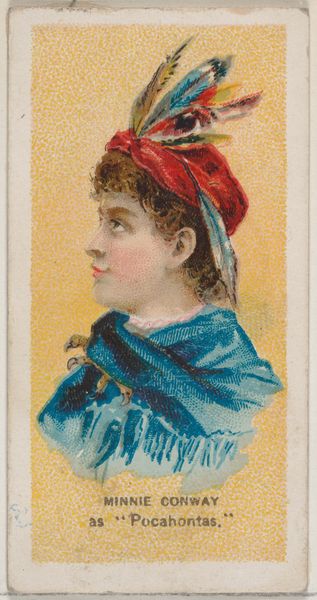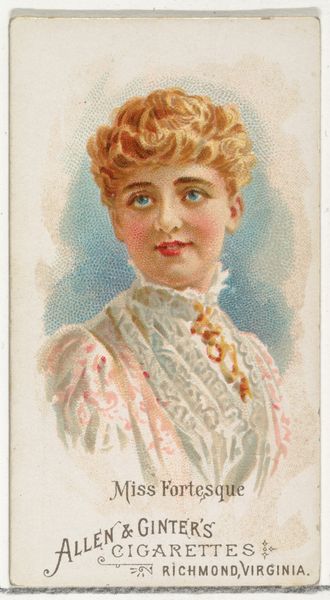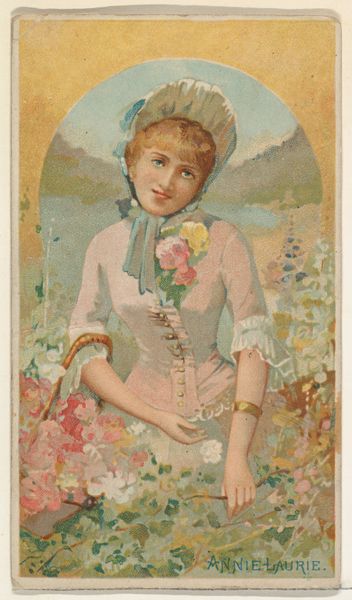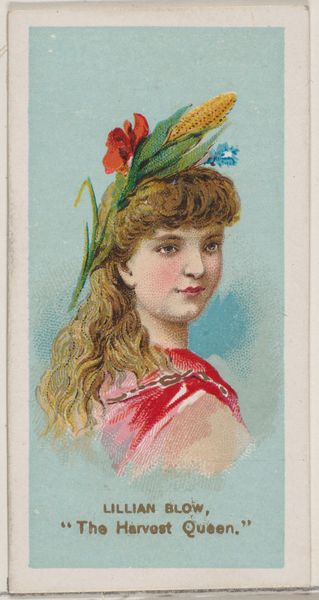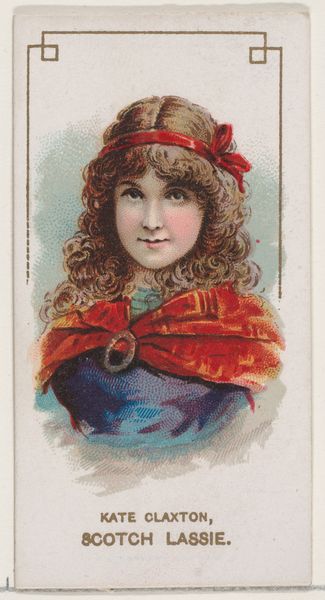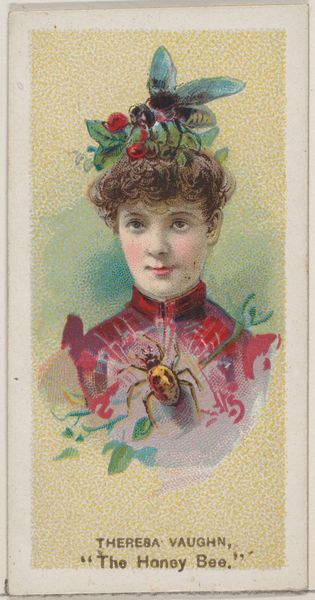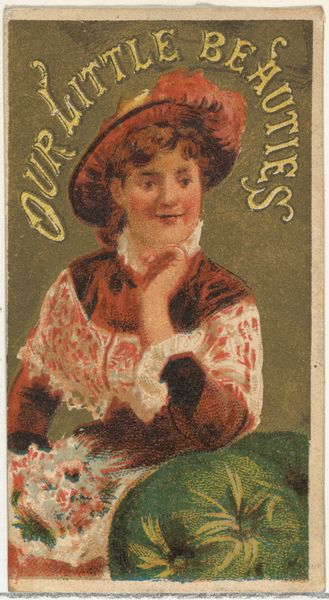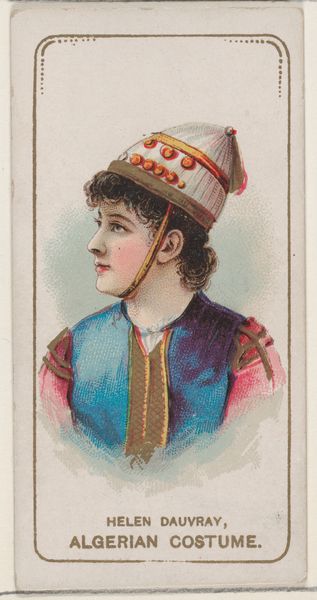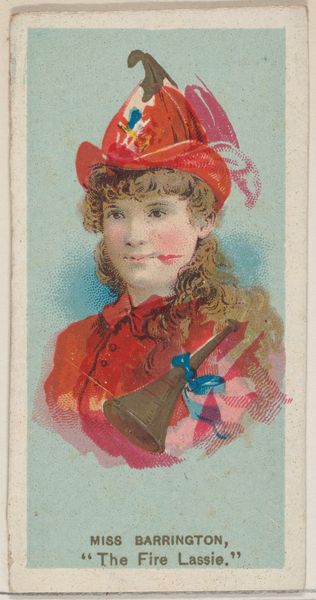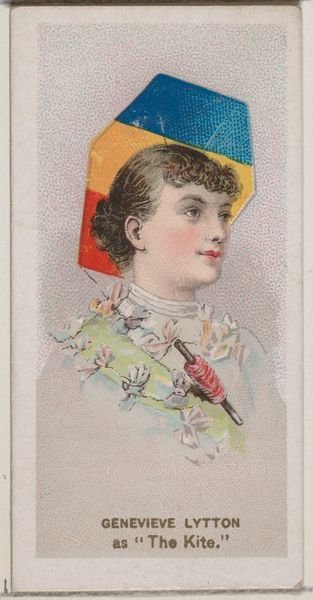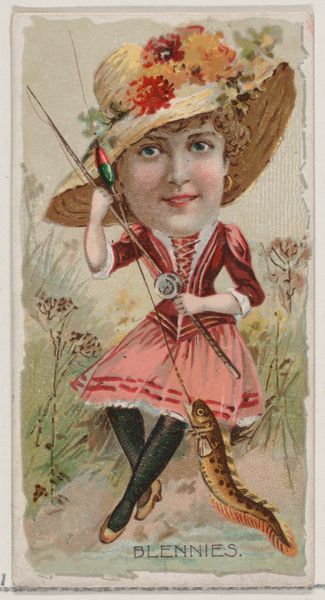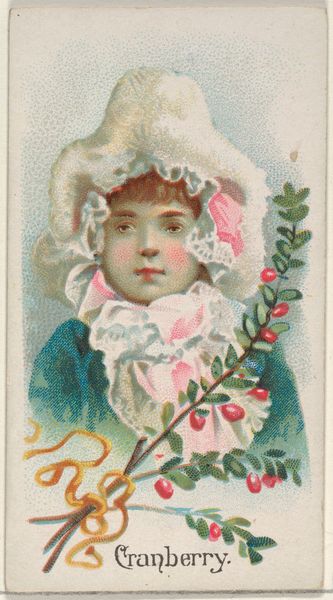
History of Christine Nilsson, from the Histories of Poor Boys and Famous People series of booklets (N79) for Duke brand cigarettes 1888
0:00
0:00
drawing, print
#
portrait
#
drawing
#
art-nouveau
# print
#
history-painting
#
realism
Dimensions: Overall (Booklet closed): 2 3/4 × 1 1/2 in. (7 × 3.8 cm) Overall (Booklet open): 2 3/4 × 2 7/8 in. (7 × 7.3 cm)
Copyright: Public Domain
Curator: Here we have an advertisement card produced around 1888 by W. Duke, Sons & Co. It's part of a series of collectible cards included in Duke brand cigarettes, titled "Histories of Poor Boys and Famous People," this one featuring the opera singer Christine Nilsson. Editor: It has such a delicate feel. The pastel colors and soft focus give it a dreamlike quality, almost ethereal. It's striking how the subject is framed against the vivid red background, which gives it a unique contrast. Curator: These cards, along with others featuring actresses and sports figures, became hugely popular, functioning as both advertising and collectibles. Think about how mass production of print media influenced visual culture at the time. These cards became powerful tools for disseminating imagery and constructing fame. Editor: Absolutely. You can see the early stages of chromolithography here, creating affordable color images for mass consumption. The very fact that opera singer Christine Nilsson appears on a tobacco card highlights how commercial culture absorbed high art for consumer appeal. It suggests an interesting leveling effect between celebrity, art, and commercial goods. Curator: Precisely! And while the series celebrated "famous people", it did so in the context of upward mobility narratives aimed to promote consumer capitalism. Editor: It also speaks to the culture of collecting. I’m drawn to its physical form; you would touch and feel this small piece of cardstock. It becomes more than an image—it's an artifact that existed within systems of consumption and exchange, hinting to class and labour, from production of cigarettes to their consumers. Curator: It underscores how these seemingly trivial objects played a vital role in constructing social identities and disseminating cultural values, a true snapshot of its time. Editor: Yes, definitely provides insights into art, commerce, and celebrity intersecting. A humble card that has bigger implications.
Comments
No comments
Be the first to comment and join the conversation on the ultimate creative platform.
